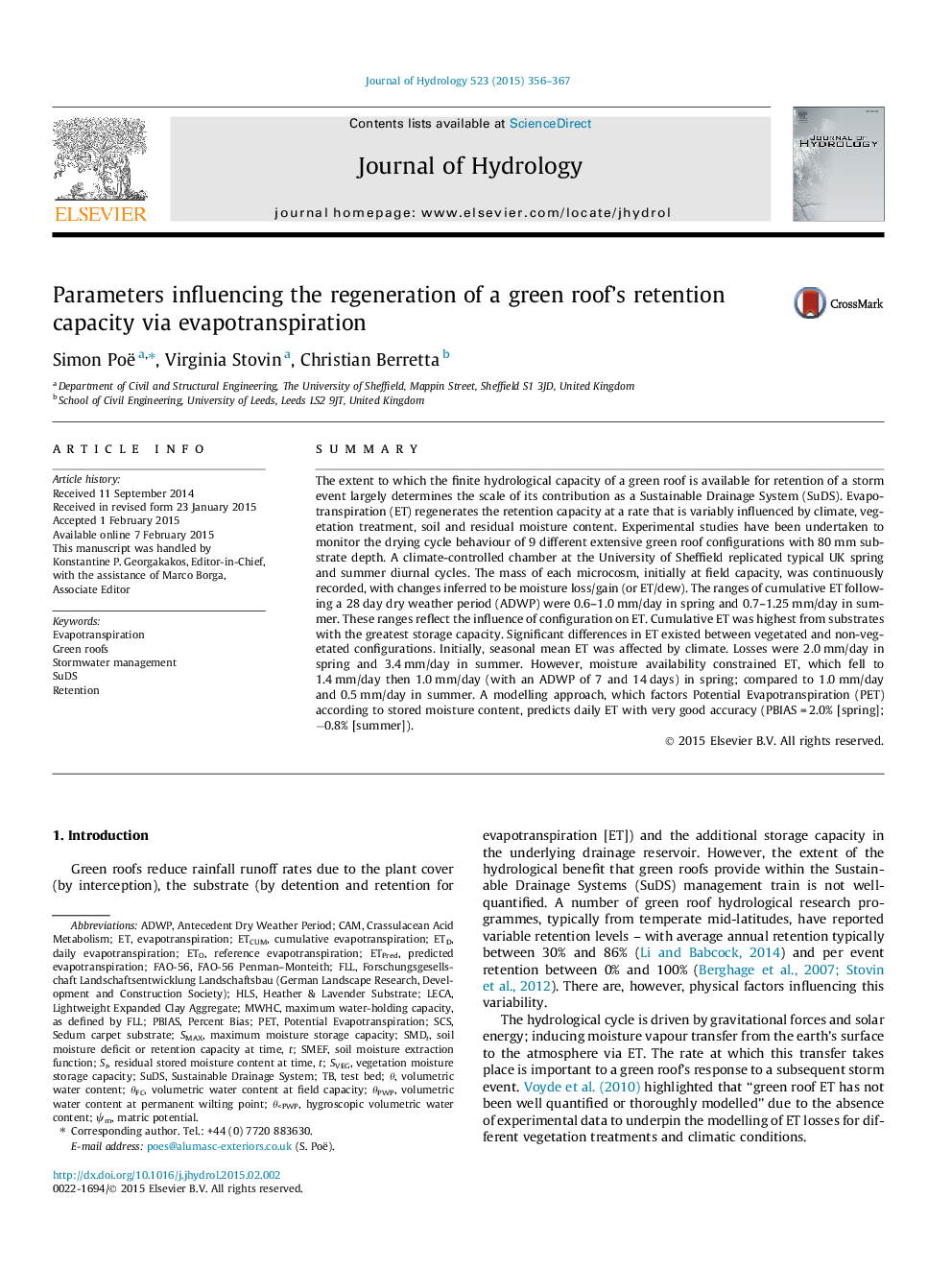| Article ID | Journal | Published Year | Pages | File Type |
|---|---|---|---|---|
| 6411703 | Journal of Hydrology | 2015 | 12 Pages |
â¢New experimental data on ET from nine green roof test beds is presented.â¢ET is presented for dry periods of 28 days in UK spring and summer conditions.â¢Moisture loss due to ET is significantly affected by moisture content and climate.â¢Moisture loss due to ET is affected by substrate characteristics and vegetation.â¢A simple model to predict moisture loss from PET is validated.
SummaryThe extent to which the finite hydrological capacity of a green roof is available for retention of a storm event largely determines the scale of its contribution as a Sustainable Drainage System (SuDS). Evapotranspiration (ET) regenerates the retention capacity at a rate that is variably influenced by climate, vegetation treatment, soil and residual moisture content. Experimental studies have been undertaken to monitor the drying cycle behaviour of 9 different extensive green roof configurations with 80Â mm substrate depth. A climate-controlled chamber at the University of Sheffield replicated typical UK spring and summer diurnal cycles. The mass of each microcosm, initially at field capacity, was continuously recorded, with changes inferred to be moisture loss/gain (or ET/dew). The ranges of cumulative ET following a 28Â day dry weather period (ADWP) were 0.6-1.0Â mm/day in spring and 0.7-1.25Â mm/day in summer. These ranges reflect the influence of configuration on ET. Cumulative ET was highest from substrates with the greatest storage capacity. Significant differences in ET existed between vegetated and non-vegetated configurations. Initially, seasonal mean ET was affected by climate. Losses were 2.0Â mm/day in spring and 3.4Â mm/day in summer. However, moisture availability constrained ET, which fell to 1.4Â mm/day then 1.0Â mm/day (with an ADWP of 7 and 14Â days) in spring; compared to 1.0Â mm/day and 0.5Â mm/day in summer. A modelling approach, which factors Potential Evapotranspiration (PET) according to stored moisture content, predicts daily ET with very good accuracy (PBIASÂ =Â 2.0% [spring]; â0.8% [summer]).
